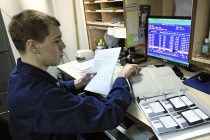Do you track your health with your smart phone? Have you been known to record your sleep patterns, stress level or mood with the help of an app. If you answered yes, then you may very well be part of the Quantified Self Movement.
What Is The Quantified Self Movement?
The Quantified Self Movement involves not only using technology to record daily habits and bodily functions, but in using the information gathered about the body for the purpose of improving one’s quality of life.
The movement began in 2008 in San Francisco, and consisted of meetings held so that those who found self-tracking experiments interesting could meet and talk about them. Today, although more than eight thousand members are listed on the web site, the movement’s founders estimate that many more “quantified selfers’ who are active around the world. And then, there are those who don’t consider themselves to be a part of the actual Quantified Self movement.
Is It Just A Fad?
There are many who believe that the movement is something that will soon fade away, despite the fact that it appears to be heading into mainstream territory. This could be due to the fact that this movement is about self-knowledge, something that many people never seem to tire of. As well, its popularity continues to grow due to the ever-increasing affordability of the devices used to record the data on.
However, some are unsure about whether or not the Quantified Self Movement is actually improving our lives in any way. Skeptics wonder whether or not all of this recording of physical data is increasing our overall happiness and effectiveness. They say that the movement is simply a digital representation of our already-existing desire to know ourselves.
Unfortunately, according to the skeptics, these ‘quantified selfers’ are in it for the thrill of measurement, and not necessarily in the improvement of life.

Who Really Owns the Data
Another questions lies in the ownership of the data that quantified selfers gather with their devices. The fact that our biodata will someday cause companies to profit from that info is being expressed by more than one pundit.
And they may not be far off, considering that investment into the creation of wearable devices that record physical data rose exponentially last year. And who was backing their creation? Venture capital firms. What do they know, one might ask? Perhaps it was the prediction by McKinsey that the biodata biz could be a $300 billion dollar annual cash cow per year, and that’s to the health industry alone.
The numbers are also interesting, with experts predicting that 70million people will be purchasing these wearable devices by 2017. But the question still remains about who actually owns the data being produced. Of course, that data can only be gleaned from our bodies because our bodies emit it. But once that data is transferred to a wearable device, does it then become the property of the device’s manufacturer?
Those in favor of the movement say that it isn’t about that; that it’s the information that consumers can get after their data has been interpreted that matters. For example, once data about your sleep patterns and heart rate has been submitted, you may then be able to get in on advice from personal trainers and health professionals who already know what’s happening inside you.
The Future of Health?
Those who are idealists say that the exchange of this type of information can end up in a better world for all, where more detailed data can result in better devices for consumers. As well, biodata can be provided to others who may want more insight into the health of a person, such as insurance companies. But as with anything, monetizing our personal data could very well harbor disadvantages that no one has thought of yet. However, it may be years before we find out.
Citations:
Guest author Ruth Suelemente writes on a variety of health-related topics. She recommends The Diet Mindset, a resource dedicated to helping people make healthy choices and find the best diet plans for their lifestyle.





